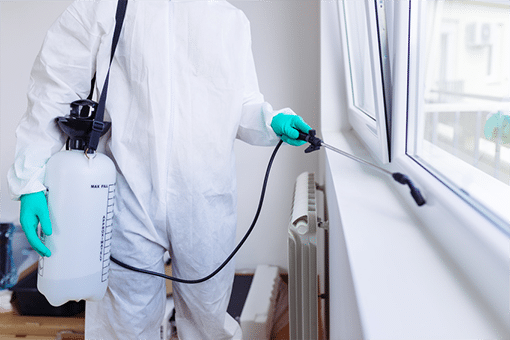Comprehensive Pest Control Services: Maintain Your Residential Or Commercial Property Pest-Free!
Wiki Article
Expert Pest Control Techniques for Long-Term Results
Specialist parasite control techniques encapsulate a thorough strategy that begins with a complete inspection and assessment, followed by exact parasite recognition to understand their actions patterns. The execution of Integrated Insect Administration (IPM) concepts, combined with eco-conscious therapies, forms the keystone of sustainable bug obliteration.Assessment and Evaluation
Upon entering a building for bug control solutions, the preliminary step is a thorough examination and assessment to recognize the degree of the problem and figure out the most effective treatment plan. Professional parasite control specialists are trained to diligently check out the facilities, seeking indications of bug task such as droppings, chomp marks, nests, or any kind of architectural damage. They will likewise assess the problems that may be bring in insects, such as food sources, water leakages, or entrance factors.
Bug Identification and Actions

In addition, comprehending the behavior of the determined pest is vital to applying efficient control measures. Understanding where insects nest, what they feed on, and their task patterns can assist pest control professionals create strategies to eradicate them efficiently.
Integrated Pest Administration (IPM)
Integrated Bug Monitoring (IPM) strategies combine multiple strategies to control and avoid pest infestations in a lasting and ecologically friendly way. Exterminator DC. By incorporating methods such as organic control, environment control, this hyperlink modification of social techniques, and making use of immune varieties, IPM intends to lessen making use of chemical pesticidesOne of the crucial principles of IPM is the emphasis on avoidance. This aggressive method entails monitoring insect populations consistently to discover any type of possible issues prior to they intensify. By recognizing insect issues early, pest control steps can be applied quickly and effectively.
Moreover, IPM advertises the use of non-toxic insect control methods whenever feasible. This can consist of employing all-natural predators of the pests, introducing beneficial pests, or using scents to interfere with mating patterns. By lowering dependence on chemical pesticides, IPM not just safeguards the setting however likewise assists preserve an equilibrium in the ecosystem.
Environmentally-Friendly Therapies
Executing eco-conscious techniques in insect control treatments can efficiently attend to infestations while prioritizing ecological sustainability. Environmentally-friendly therapies focus on minimizing the influence of pest control techniques on communities, non-target microorganisms, and human health.An additional secret element of environmentally-friendly therapies is making use of natural and eco-friendly items that break down quickly i loved this without leaving harmful deposits in the setting. Agricultural insecticides derived visit this web-site from plants like chrysanthemums or neem offer reliable bug control while positioning very little danger to non-target species. Additionally, employing techniques like warm therapies or pheromone traps can target specific pests with accuracy, reducing the overall environmental effect of insect control techniques.
Recurring Surveillance and Upkeep
Normal examinations by trained specialists are necessary to determine any type of indications of insect activity, examine the effectiveness of previous treatments, and make adjustments to the pest control strategy as needed. By monitoring bug populations over time, parasite control professionals can track trends, prepare for possible problems, and implement preventive actions to lessen the risk of future infestations.
Along with surveillance, maintenance techniques are crucial for long-term bug control success. This consists of executing appropriate hygiene actions to eliminate potential food and water resources for bugs, securing off entrance indicate protect against insects from getting in the premises, and addressing any kind of structural concerns that can help with pest problems (pest control). By integrating continuous tracking and upkeep into an integrated insect management approach, companies can make certain a pest-free atmosphere and protect their property versus expensive damages and health dangers
Verdict
Finally, making use of professional pest control techniques such as complete inspection and assessment, accurate insect recognition and understanding of their habits, integrated parasite monitoring techniques, environmentally-friendly treatments, and recurring monitoring and upkeep are vital for accomplishing long-lasting results in parasite control. By executing these approaches, people can successfully handle insect invasions and maintain a pest-free setting in a sustainable way.Report this wiki page